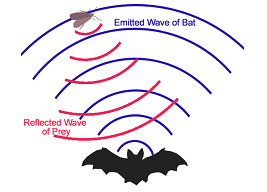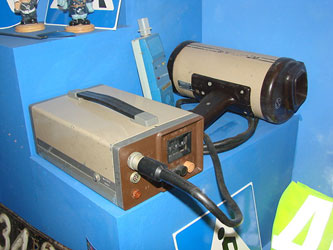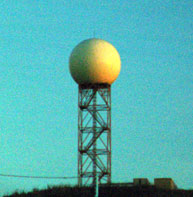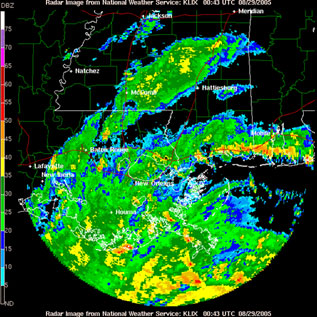
Source: Bat echolocation, Shung, Wikimedia commons
Waves can also be Doppler shifted when they reflect off of a moving object. The frequency of the reflected wave is shifted by the motion of the object from which they echo. Bats and dolphin can use this principle to locate and hunt for food. They use a process called echolocation—determining the location of prey by emitting a sound wave and listening for the echo. Bats have such sensitive ears that they can tell the size, location, and direction and speed of motion of insects as small as a gnat from the Doppler shift.

Source: Bat echolocation, Shung, Wikimedia commons
Unfortunately, the Doppler shifting of reflected radar waves is a very accurate method for determining the speed of objects. If you have ever been pulled over for speeding, chances are the officer who issued the ticket used a radar gun to determine your speed. The gun does a quick calculation of your speed by determining the frequency shift of a radar pulse.

Source: USSR Radar gun 65, Sergeev Pavel Wikimedia Commons
Doppler shifted radar waves are a good way to determine the speed and direction of larger objects too. Meteorologists use Doppler radar to make very precise measurements of the magnitude and direction of a storm's velocity, and therefore can make better prediction of where a storm is heading and when it will get there.

Source: Doppler-Radar-Tower, Intersofia, Wikimedia Commons

Source: : Hurricane Katrina Doppler, National Oceanic and Atmospheric Administration, Wikimedia Commons